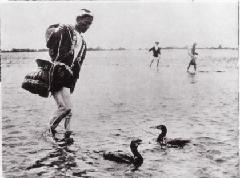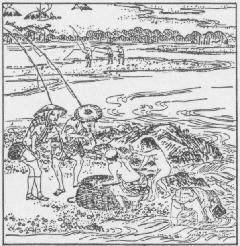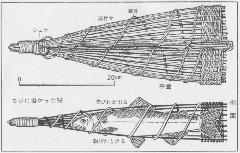Last updated: June 28, 2017
Inagi City is located in the middle reaches of the Tama River, and has been used for various types of river fishing since ancient times. The many types of fish that inhabit the middle reaches of the Tama River were an important food source for people in the past. Ayu in particular had a high commercial value, and various fishing methods were developed. The following types of sweetfish fishing were carried out in the Tama River around Inagi. Fishing methods using fishing rods and okitsuri, bullet nets, toami, machiami, daiami, etc. These include net fishing (amiryoho), poking fishing using box-eye mirrors and fishing boats, and cormorant fishing (cormorant fishing).
Ayu fishing in the Tama River has already appeared in literature since the Kamakura period, but it became famous in the Edo period, when the ayujonou of Edo Castle began. The 8th shogun, Yoshimune, once banned fishing in the Otome River, except for sweetfish, which was the official business. Successive shoguns, Emperor Meiji, and members of the imperial family often visit the Tama River to enjoy sweetfish fishing. Since the Meiji period, the Tama River has become a free fishing ground, and ayu fishing viewing on houseboats (yakatabune) has developed. Cormorant fishing began around this time and continued until the first year of the Showa era. We asked cormorant fishermen from Yotsuya and Koremasa in Fuchu City, and cormorant fishing was held in Daimaru, Higashi Naganuma, Oshidate, and the Tamagawa River in Yanoguchi. Most of the daytime is spent on foot, with one cormorant fisherman using two cormorants (sea cormorants) and two seko (net pullers) catching cormorant nets. Cormorant fishing was carried out by pulling. This type of cormorant fishing was observed on a houseboat.

Ayukago

Cormorant fishing on the Tama River

Ayu fishing (Edo Meisho Zue)

Ayu net fishing using moji
Inagi City Education Department Lifelong Learning Division Tel: 042-377-2121